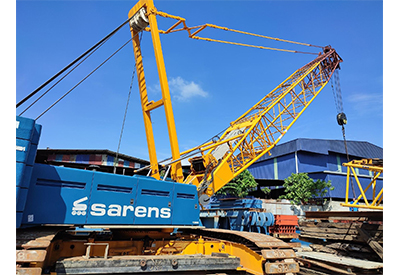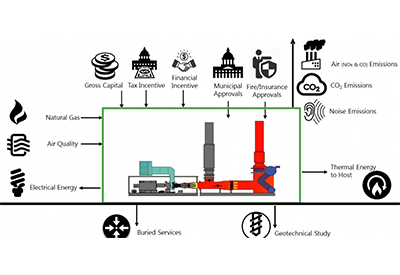The Impact of the Construction Industry in British Columbia Is Already 17% Above Pre-pandemic Levels

July 20, 2022
According to data from the BC Construction Association (BCCA), the total contribution of the construction industry to society in the region now exceeds $134 billion, with more than 215,000 workers employed in this sector.
Large cities such as Vancouver have seen an exponential increase in the number of construction projects, with local businesses increasingly looking to companies such as Sarens for logistical support and advice, providing expertise in the lifting and tilting of panels and structures in new buildings.
The construction sector has become one of the most important economic drivers in the BC region over the past five years, and is now 17% above pre-pandemic levels according to data from the BC Construction Association (BCCA). According to their latest statistics, this sector already contributes nearly $134 billion to the local economy, directly employing 215,000 increasingly skilled workers.
This significant growth is caused by the emergence of hundreds of new projects across the Canadian geography. In fact, according to Statics Canada, investment in new projects has raised in the country by 2.7% to nearly $20.9 billion in April alone. Residential projects have taken the lead in terms of the number of development projects, with a 3.2% increase over the country, although the creation of large industrial and commercial structures has also continued to show a steady growth of around 1.5%.
It is important to raise that this large growth in the number of construction projects, whether residential, commercial or industrial, has led to the emergence of a significant number of new construction firms, up 11% over the last five years, albeit with a smaller number of workers, only 6.53 on average. Moreover, according to BCCA, 90% of firms in British Columbia have fewer than 20 workers.
In this context, more and more companies, especially in large cities such as Vancouver, are exploring alternative construction methods which provide more cost effective techniques and decreased construction time. One of the more popular alternatives is tilt panel building construction which has been growing in popularity in a majority of the large cities and surrounding areas throughout Canada. As more companies are becoming involved in this construction method, they are seeking the support and advice of major heavy lifting and transport specialists in order to execute their projects and meet all the requirements in terms of time, feasibility and safety. Sarens, world leader in heavy lifting, engineered transport and crane rental, has become an ally of such companies in recent years due to its high level of specialisation in tilt panel installation projects.
The wide diversity of cranes in the Sarens fleet, as well as the experience of its local team of operators and supervisors, allows the company to adapt to the increased size of panels and overall size of the projects, always finding the right solution for its clients’ needs. According to Jeff Chernish, Country Manager of Sarens in Canada, “We want to reaffirm our company’s commitment to the local economy and to those sectors where we can be of assistance. In this regard, there are no projects that are too small or too big for us, so we can offer both public and private investment projects our extensive experience on various tilt panel projects across Canada”.
Sarens has accumulated a wealth of experience in a multitude of tilt panel projects in Canada. For example, it contributed to the construction of various buildings in Ontario, Alberta and British Columbia.
Sarens is also leading projects in many different industries in Canada, demonstrating its ability to adapt to different conditions and projects. In the steel production sector, Sarens is one of ArcelorMittal Dofasco’s strategic partners in the Hamilton region of Ontario. In this region, Sarens also worked with Valard Construction to install 600 km of power lines towers. Sarens is a major player in Canada in the transportation and construction of wind farms such as Whitla in Alberta, Golden South and Blue Hill in Saskatchewan.
















